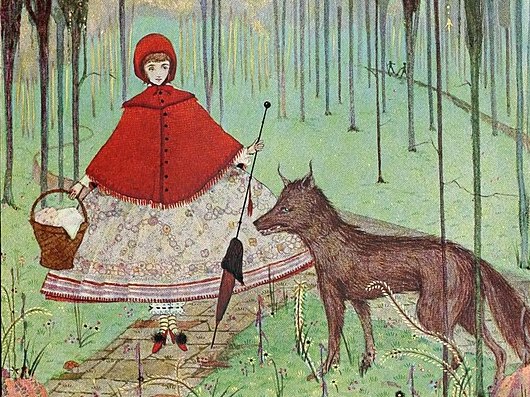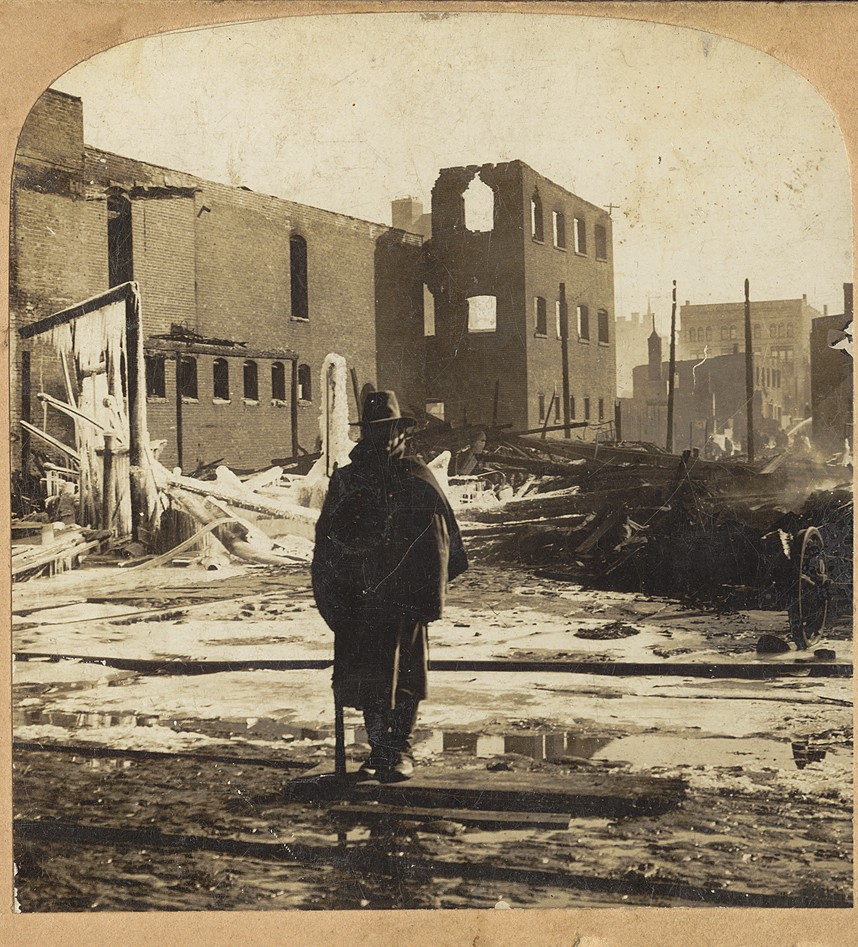interviews
Kelly Link Makes Fairy Tales Even Weirder Than You Remember
The author of "White Cat, Black Dog" on why we're drawn to folk tales and how superstitions shape stories

Like magic, narrative rearranges the world through words, and Kelly Link is one of modern fiction’s boldest alchemists. Her stories (which have now been collected into five books, and garnered Link a MacArthur “Genius Grant,” among other honors) make the familiar so strange it’s almost familiar again, spinning straw into ghosts and ghosts into disgruntled exes. What happens, then, when the bard of the workaday weird sets her sights on fairy tales, a genre already firmly grounded in the impossible, a literature in which animals talk and potions swiftly transform? A trip within a trip within a trip, to be sure—but one whose longings, joys, and betrayals remain stingingly human.
The fairy tales that form the basis for each story in Link’s new collection, White Cat, Black Dog, draw upon a wide range of traditions, from Grimm classics to Scottish ballads to Norwegian folklore. Fairy tales are well-loved source materials for modern reimaginings, but the stories of White Cat stray wonderfully far from their sources; they’re not so much straight updates as they are fever dreams by the original characters that we’ve been permitted to step inside. Hansel and Gretel become android siblings marooned on a distant planet; hell’s royals brunch and bitch in modern-day Manhattan; Snow-White arrives at a house sitting gig where the instructions are scant but the magic mushrooms abundant. Into an ancient tradition of one-dimensional heroes and unbearably happy endings, White Cat instills the contradictions of real personality and relationships both fragile and tender. Slowly, these stories suggest that human desire is the dankest magic of all, every bit as likely to betray us as it is to save us.
Over email, Link and I discussed what keeps fairy tales forever in our cultural imagination, how growing up religious shaped her own “personal superstitions” around life and writing, and the two-sided coin of humor and horror.
Chelsea Davis: Rules—often arbitrary, always ominous—shape many fairy tales, and most of the stories in White Cat. Don’t let anyone enter the front door; don’t visit your lover unless it’s snowing; and (my favorite) don’t hunker down for the night in a home that doesn’t have a corpse inside. How do explicit rules activate or shape a story?
Kelly Link: I love thinking about rules! I’m deeply interested in the relationship that we have with them as members of a family, or a social group, or a culture. They mark out the territory in which we (or our characters) live our lives. When thinking about imaginary people, a useful approach is to consider what rules they live by, which rules they break, and the consequences or freedoms that occur as a result.
When I was a kid, I was fascinated and horrified by all sorts of rules: Don’t wear white after Labor Day! Wear pantyhose with skirts. Never wear navy and black together. Don’t take candy from a stranger.
I was a preacher’s kid, and aside from all the familiar stuff about virginity, and not taking the Lord’s name in vain, there were weirder, more interesting rules about not eating shellfish, or wearing certain fibers together, or not suffering a witch to live. (Though the two rules about loving your neighbor as yourself, and doing unto others as you would have them do unto you still seem like good practice.)
When thinking about imaginary people, a useful approach is to consider what rules they live by, which rules they break, and the consequences or freedoms that occur as a result.
Personal superstitions are interesting to me, too, and how they function as rules—for example, I have a rule that as much as I love Patrick O’Brian’s Aubrey and Maturin novels, I can never read another one. When my daughter was born at 24 weeks, I read the first three books in the series in the NICU while sitting beside her isolette. But each time I started one, she would have a life-threatening crisis, and so I finally put the series down forever. Even now, when she is perfectly healthy, I have a horror of picking up the fourth book, just in case I summon up some bad luck again.
Horror and fairy tales are two of my favorite forms of narrative, and those are both genres where rules loom large. Don’t smell wolfsbane. Be kind to animals. Don’t invite strangers over the threshold. Don’t step on a crack. Don’t be greedy, don’t say thank you to fairies, but do listen to birds, but don’t blow on a whistle that you find on the beach, but always be polite to old ladies. I love rules that feel nonsensical and fraught with weight at the same time. I love when rules are inverted. The introduction of a rule tells the reader that story is going to follow, and hopefully the consequences will in some way be surprising or fresh.
CD: Fairy tales have been the wellspring of countless modernizations, adaptations, riffs. You yourself wrote an introduction to a reissue of one of the best-known iterations of this—Angela Carter’s The Bloody Chamber. In your mind, what qualities of fairy tales make them so inviting for artists and writers to reimagine?
KL: The original fairy tales have a brisk, conversational tone, as if they’re being told to you directly even though they’re words on the page. Maybe that makes them lodge in the brain more firmly? We often hear or read them first in childhood, and often more than once, or in more than one shape or version. Right from the start, they feel like shapeshifters.
There’s also the lack of psychological realism—once you begin to apply psychology to the characters, or allow those characters the narrative space to have deeper, more complicated reactions to pretty traumatic events (death, abandonment, parental cruelty), fairy tales become different kinds of beasts. Or else you can keep the characters relatively flat, and change the setting instead, or make the language more estranging or more personal. The patterns of fairy tales, too, are so recognizable that introducing even the smallest piece of those patterns—“once upon a time,” for example —means the language of the story that follows becomes charged. Readers will pay closer attention to the appearance of animals (talking or not), or colors, or, say, repetitions of three.
White Cat, Black Dog is dedicated to Ellen Datlow and Terri Windling, who edited a series of anthologies of retold fairy tales—I learned a great deal by seeing how the same fairy tale could become something completely new in the hands of different writers, all with their own, particular points of view and sensibilities.
CD: You’ve said in other interviews that your past collections have come together in an organic way—from disparate stories you’ve already written, rather than from your sitting down and setting out to Write A Collection. Did this collection come about equally incidentally, or was there an idea of a Project from the beginning? It has such a clear thematic focus.
KL: The earliest story in this collection is “The Lady and the Fox,” which draws on Tam Lin, a ballad, rather than a fairy tale, but the next two were “The Game of Smash and Recovery” and “The White Cat’s Divorce,” which was specifically written to accompany a museum exhibition of fairy tale art. So as I was working on that story I was thinking a lot about fairy tales. I’d also read Daniel Lavery’s collection The Merry Spinster, and had been thinking about how much I loved the tone created by those stories in concert.
Humor and horror are both doors into story for me—and inside a story, they’re paths to understanding or rearranging situations.
I often set up a rule or two when I’m starting a new story, and it seemed like a good project to make a rule for a group of stories this time, which would be to use fairy tale approaches, or motifs, or language each time, even if indirectly. “The Game of Smash and Recovery” is the only story where I didn’t begin with this rule, but it moved into conversation with “Hansel and Gretel” in obvious ways once I added the subtitle. It’s been useful for me to think, during revision, about the stories or genre patterns a particular story is in conversation with, as I go forward. This time I started when I had an idea for a story, before I had any words on the page.
CD: The exact nature of the “influence” between original and new fairy tale seems to vary wildly and wonderfully throughout White Cat. Some of your stories borrow a character relation (the orphaned siblings of “Hansel and Gretel” become two mechanical beings marooned on a strange planet in “Game of Smash and Recovery”), for instance, while others compress the original fairy tale into an interpolated story (a bit of airplane smalltalk in “The Girl Who Did Not Know Fear”). Could you choose a story from White Cat and talk about how it arose, and how its finished form is in conversation (or argument) with the original?
KL: “Skinder’s Veil” came out of a story that I couldn’t quite figure out how to write in an interesting enough way. This was going to be a version of “The Juniper Tree” in which a girl made repeated visits to a swimming pool where her mother had drowned, and in which the pool gave her mostly unhelpful advice. There’s a very small fragment of this still in “Skinder’s Veil,” but mostly that particular fairy tale got eaten up by “Snow-White and Rose-Red,” which of course was swallowed up by the story of a graduate student with an unusual house sitting job. Because “Snow-White and Rose-Red” was the kernel at the heart of the larger story, I knew there would be animal visitors, and two sisters. Because I often have a hard time sitting down to write, I wanted to write a kind of story where that was the main problem, and where the protagonist got some very unexpected and slightly disturbing aid with the work he needed to do. I suppose there’s a bit of “Rapunzel” in there as well.
CD: Something I really relish about your fiction is the way it manages to knock me off balance with its humor. Often, you’ll immerse the reader in pitch-dark subject matter (grief, death, violence)… and still manage to make her chuckle. A kind of meta-commentary on this emerges in “The White Road,” which is among this collection’s grimmest stories: it has the feel of a medieval plague tale, except the plague is not a disease, but shape-shifting monsters that emerge at night to murder and maim. Yet the story also contains wry asides and farcical events; even the narrator says he can’t decide whether his brushes with paranormal body horror count as comedy or tragedy. How do you think about the relationship between violence and humor in art? Do you find yourself consciously injecting humor into your stories?
KL: Humor and horror are both doors into story for me—and inside a story, they’re paths to understanding or rearranging situations in which otherwise I (and perhaps the reader) might be overwhelmed in the most uninteresting ways. I reach for humor consciously because I have to reach for most things consciously when I write. And now I’m wondering if that might be an interesting rule to set for myself—to set aside even small bits of comedy. Argh.
CD: Cats appear in all of your short fiction collections, and in nearly every story (and the title) of White Cat. What keeps you coming back to cats?
KL: Perhaps it’s simply this—I love cats but can’t have one because I’m mildly allergic and my husband is even more so. But I do have a black dog now, who is sleeping on the couch next to me as I write this. She has terrible dreams, and every once in a while I have to stop typing to tell her everything’s okay.
CD: You run a small press, publish a zine, and have edited anthologies like The Year’s Best Fantasy and Horror from St. Martin’s Press. In what ways have the acts of editing, curating, and anthologizing others’ work shaped your own writing process over the years?
KL: Mostly I’m just very grateful for how much good short fiction there is out there in the world, whether we get to publish it or not. I like editing, I like conversations with writers about the experience of reading their work, I love leading workshops and listening to writers talk about what they took away from someone else’s story, things that I didn’t even notice. What I take away from workshop is other people’s approach to reading and making meaning, so that I can attempt to apply those approaches to my own fiction. I spend a great deal of time considering what shapes or meanings very different readers might make out of what I’m writing, and sometimes I’m attempting to anticipate or guide those meanings. Mostly what I want to do is make as much space as possible for those varied shapes and meanings that seem interesting to me.
Oh, and reading slush has taught me that a poorly written story that takes risks and does some large and unexpected things is more interesting than a well-written story that doesn’t do anything surprising.
CD: Are there any patterns in what catches your attention, as an editor and a reader? In other words: what lights a spark for you, in another author’s story?
I want a sense that something important is happening, whether it’s language, or an event, or a need to connect and communicate.
KL: It’s very difficult to get across what I mean by this, but anything at the start of a story which persuades me that there is some authority or conviction here. That this is a story which the writer feels strongly about telling, and where the situation feels urgent or at least necessary to put down in words. I want a sense that something important is happening, whether it’s language, or an event, or a need to connect and communicate. I don’t need a big move or a wild first sentence, but I do want a feeling that there is something at stake. My friend Holly Black says a story or a novel makes a promise on the first page about what will matter in the story. This might be a character, or a need, or a genre, or an approach toward language and rhythm. I want a sense of what is being promised, and to trust that the writer is going to take me somewhere interesting.
CD: Last I heard, your first novel, Book of Love, was slated for release in 2024. Is that still the case? And how has the experience of writing a novel differed from that of writing short stories?
KL: Well, the novel is a beast—a much bigger book than I’d hoped to write. It’s now lumbering toward copy edits, and I’ve sent it out to various friends and readers. The most surprising thing to me was that it’s not possible to hold all of a novel, past a certain word count, (say 60,000 words) in your head. I’m used to being able to move back and forward in a story, revising backward as I write forward. With the novel, I could keep hold of the ending, which I knew, and of the beginning, but I kept forgetting bits and pieces of the middle, even as I was writing it. And when I was finished, I felt a bit flattened by the experience of rereading it.
I’m used to the particular pleasure of a collection, which is that there are many different stories written in different keys, so to speak. There can be a great variation in tone, in sensibility, in speed of movement, and in the general matter or question of what’s at stake. There’s liveliness and movement to a collection, whereas a novel is one mostly coherent thing. I spent so much time writing it that it felt strange to have it be all one object, if that makes sense. Perhaps I thought I would be a different kind of writer while I was writing a novel? And so it felt disheartening to finish it and still be myself, so to speak. But now I’m thinking about writing another novel, and maybe that one will do the business of translating me into something new and surprising.








